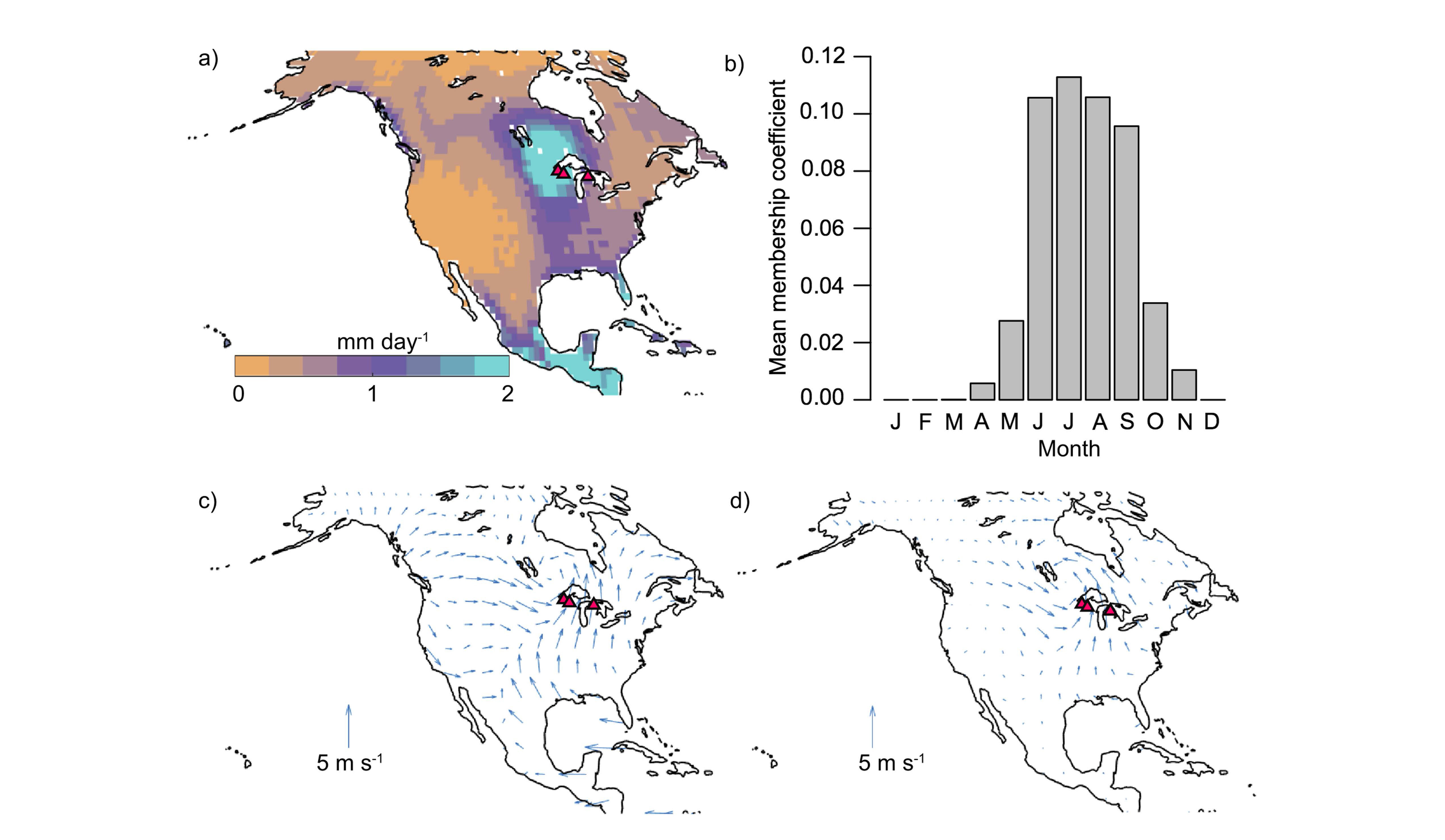Large-Scale Meteorology Refines Carbon Exchange Rates
Carbon dioxide (CO2) is a major driver of climate change. While burning fossil fuels drives the increase of atmospheric CO2, ecosystems may offset fossil fuel CO2 emissions in North America by taking up carbon through photosynthesis and storing it in vegetation and soils. However, the ability of North American ecosystems to continue to act as a sink for atmospheric CO2 may change depending on various factors, including climate.
The effect of large-scale meteorological systems on regional, continental-scale carbon fluxes has not been studied extensively. Nina Randazzo, a Ph.D. candidate in Anna Michalak’s lab, with colleagues, is now studying the impact of continental-scale meteorology on carbon uptake across North America. The goal is to better understand climate controls on ecosystem carbon uptake and storage to project the ability of these ecosystems to continue to sequester carbon, even with climate change.
.jpg)
Nina Randazzo, a Ph.D. candidate in Anna Michalak’s lab
Image courtesy Carnegie Institution for Science
Climate and meteorology affect photosynthesis, plant respiration, and soil microbial activity, influencing the land-air carbon balance. Using an algorithm to identify meteorological features and a network of observational sites to measure CO2 exchange, the team investigated a jet stream-associated storm track’s interaction with a monsoon-like system from the Gulf of Mexico. Carbon uptake was suppressed directly under the storms and throughout a large region experiencing the wet system.
The team also studied the relevance of these events for the total amount of carbon absorbed over the course of the growing season. Great Lakes forests, which have a long data record, experienced a seasonal suppression of carbon uptake in years with frequent storms of this type during the study period.
The team also investigated how climate variables affect the carbon balance across Alaska’s ecosystems. Thawing soils and increased microbial activity can lead to rapid carbon loss to the atmosphere, but a longer growing season could increase carbon stocks. These two factors lead to uncertainty about the net effect of climate change on high-latitude carbon balance.

This diagram shows the precipitation pattern in the upper Midwest U.S. studied by Nina Randazzo and colleagues. Image courtesy Journal of Geophysical Research, Biogeosciences with permission
Observation towers are shown by red triangles. The precipitation pattern is associated with a mid-latitude cyclone that is influenced by the Great Plains low-level jet and the North American jet stream. Average daily precipitation during this event, which occurs mostly during the summer (panel b), is concentrated just northwest of the Great Lakes (panel a). The winds associated with this precipitation pattern are characterized by a strong cyclone in the area of precipitation and inflow from the Gulf of Mexico (panel c), which are shown relative to general summertime winds (panel d).
They used geostatistical inverse modeling with three years of NASA data, which relates atmospheric CO2 observations and environmental variables to CO2 exchange. They found that autumn carbon exchange is sensitive to the warm, moist conditions that are predicted to become the norm in Alaska. The tundra and shrubland biome lost large amounts of carbon under these conditions. But a longer growing season in the boreal forest biome offset that CO2 release. These results suggest that tundra and shrubland carbon stocks are more vulnerable to carbon loss.
